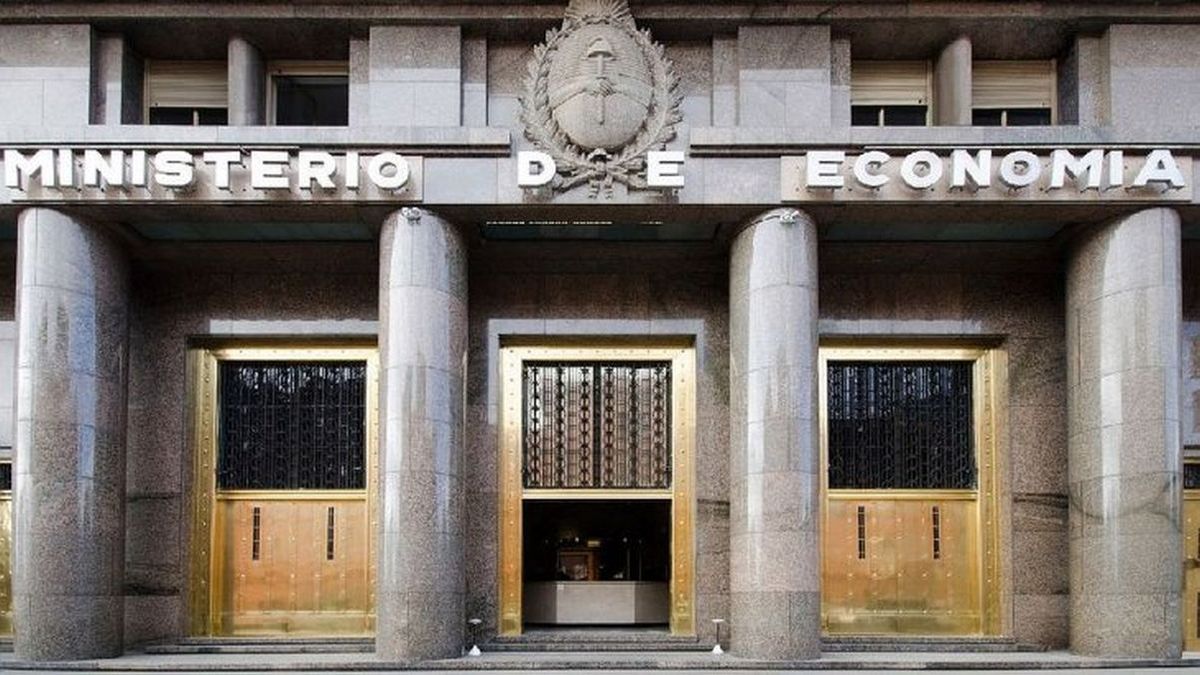In the middle of a hot day in Congress before the treatment of the bases bill, Luis Caputo placed $5.4 billion of debt in pesos in the first tender in June. Thus, as Ámbito said, he specified a pause in the strategy of migration of liabilities from the Central Bank to the Treasury and limited itself to renewing the weekly maturities of public securities.
After having received offers for $16.4 billion, the Ministry of Economy decided this Wednesday to concentrate the entire amount placed in a fixed rate bill (LECAP) maturing in September and declared void two other shorter LECAPs, in July and August, which had put on the table.
The objective was to give a signal about the returns and extend, a little, the placement period compared to previous auctions. The LECAP as of September cut at a monthly effective rate of 4.25%, the floor that the Ministry of Finance had predetermined for this instrument. After the bidding, the area secretary, Pablo Quirno assured that “the negative real rate process has come to an end.”
The official message arrived after financial shock that the Government suffered last week and that, among other triggers, was triggered by the limits it found in the liquefaction process via rates real super negatives after the last cut applied by the BCRA, according to different voices in the market. Until now, the economic team had relied on returns much lower than inflation to reduce the stock of pesos in the economy in real terms.
Quirno stated that the cycle of negative rates fulfilled “the double objective of contributing to the sanitation of the BCRA’s balance sheet and being a fundamental pillar in the reduction of inflation during these six months of management.”
Caputo He completed the message during his presentation this afternoon at the EFI Expo event: “The era of the negative real rate ended today for usThat’s why today we held a tender where we set a minimum rate of 4.25% for 90 days. Although there were offers at 30 and 60 days at a lower rate, we ended up taking the entire 90-day tender at the rate of 4.25% to give the signal to the market that the function of the negative real rate of the first months was already It fulfilled its objective.”
At the City tables they point out that it remains to be seen what the announcement specifically impliessince in today’s tender the cut-off rate was a few tenths below the May inflation estimates and for June several consulting firms anticipate a rebound in the CPI to levels above 6%.
“We remain waiting for future inflation records and future decisions from both the BCRA via reference rate as from the Treasury via rates validated in tenders to evaluate the change announced by the Government,” said Juan Manuel Franco, chief economist of the SBS Group.
For Claudio Caprarulo, director of the consulting firm Analytica, with this message the Government shows pragmatism and sends a signal to the International Monetary Fund (IMF)which tomorrow will discuss the review of the current program and to which Caputo announced that he will ask for new debt. “The ‘Chainsaw and Blender’ program was no longer enough”said the economist and added: “It remains to know what the fiscal and exchange rate changes will be. There is a long way to go.”
For now, if the decision is consummated, the cost that the treasury pays for its debt will become more expensive in real terms. A liability that has grown in recent times in line with the strategy of migrating banks from BCRA repos to short-term public securities. For example, in May, the Central Bank’s paid liabilities were reduced by $14.2 billion while the Economy added new debt of $11.9 billion.
Pause to the debt handrail
The Government implemented this policy up to now debt handrails with the objective of strongly reducing the stock of repos of the monetary authority, which Javier Milei raised as a prior requirement to the opening of the stocks exchange. This implied that the Treasury placed debt above that necessary to renew its maturities and that it granted the banks a higher return than what they received for the Central instruments. But This week, Caputo decided to pause that process and place only what is necessary to refinance your biweekly commitments.
As Ámbito said, different voices argued that This migration of pesos did not necessarily pave the way for the lifting of the stocks since from then on the challenge would be to achieve the renewal of each of the growing Treasury debt maturities, which could eventually put pressure on the dollar. They are the same pesos that migrate from one State account to another.
Furthermore, Caputo himself points out that they still do not have sufficient reserves to face a smooth opening. According to calculations by Marina Dal Poggetto, net reserves are still negative by more than US$2.3 billion. And the Central Bank faces increasing difficulties in adding foreign currency. Thus, the Government once again positions expectations in the negotiation with the IMF to obtain more financing.
However, during his presentation at Expo EFI, Milei He celebrated the result of the debt handrail and assured that “there are only $6 billion left to end the problem” of the repos since, of the $18 billion remaining, there are around $12 billion in the hands of public banks.
Even so, He stated that the biggest obstacle is the stock of puts, the liquidity insurance that the Central Bank granted to the banks so that they agreed to finance the Treasury during last year and the first months of the current administration. This is a latent debt for the monetary authority, since in the event of massive execution of these insurances, the BCRA must respond with an issue to repurchase the Treasury securities. The President calculated that the stock of puts is 4 points of GDP.
The truth is that the Government has not yet announced any plan to move forward in dismantling the puts and analysts consider that, in any case, it is a process that will take time. The thing is, to resolve it, banks should deliver all the insured securities they have, which do not count towards credit risk limits. “You have to see what they would give them in exchange,” asks a source consulted on the matter.
Source: Ambito
I am a 24-year-old writer and journalist who has been working in the news industry for the past two years. I write primarily about market news, so if you’re looking for insights into what’s going on in the stock market or economic indicators, you’ve come to the right place. I also dabble in writing articles on lifestyle trends and pop culture news.




